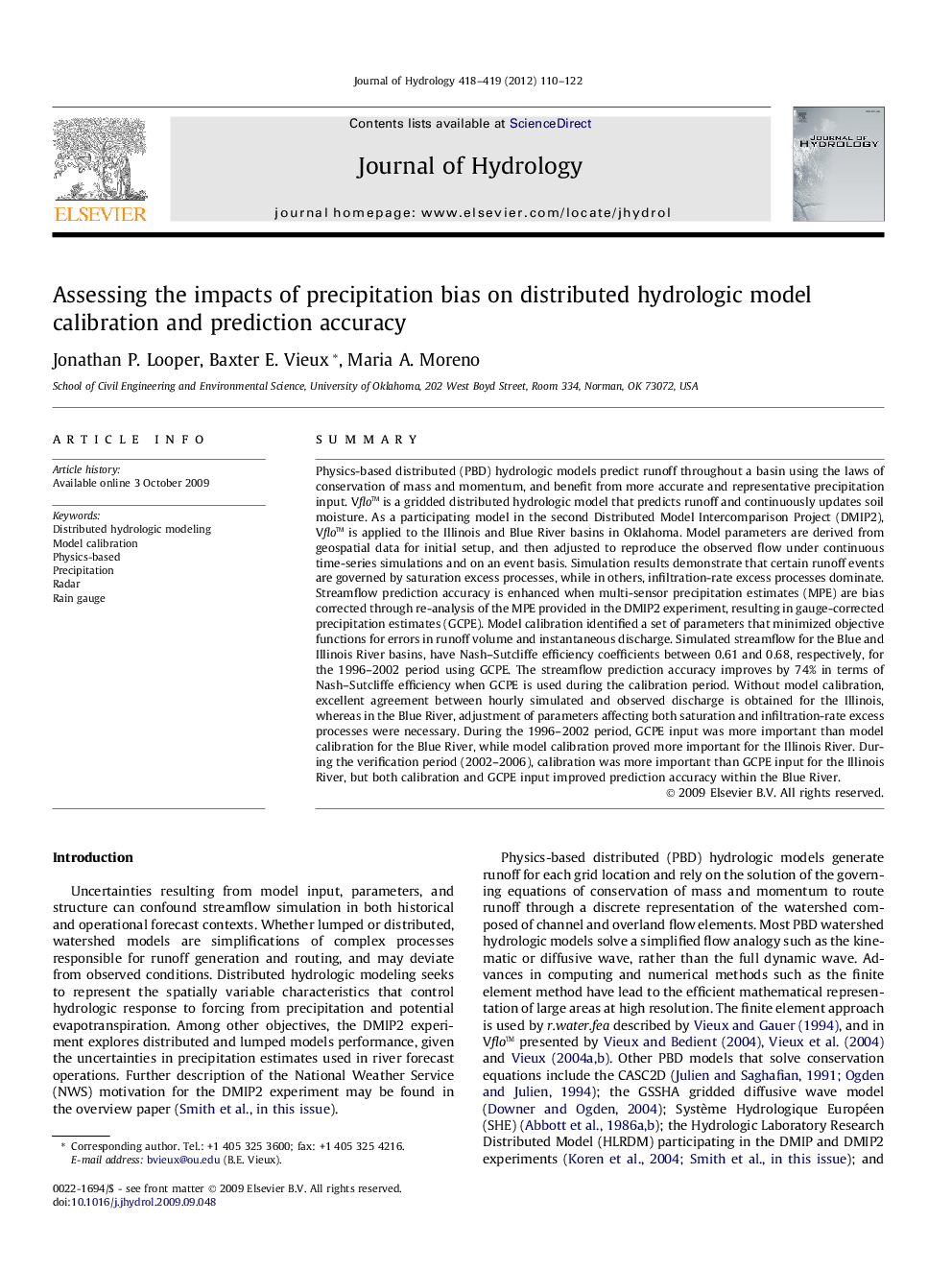| کد مقاله | کد نشریه | سال انتشار | مقاله انگلیسی | نسخه تمام متن |
|---|---|---|---|---|
| 4577196 | 1630002 | 2012 | 13 صفحه PDF | دانلود رایگان |

SummaryPhysics-based distributed (PBD) hydrologic models predict runoff throughout a basin using the laws of conservation of mass and momentum, and benefit from more accurate and representative precipitation input. Vflo™ is a gridded distributed hydrologic model that predicts runoff and continuously updates soil moisture. As a participating model in the second Distributed Model Intercomparison Project (DMIP2), Vflo™ is applied to the Illinois and Blue River basins in Oklahoma. Model parameters are derived from geospatial data for initial setup, and then adjusted to reproduce the observed flow under continuous time-series simulations and on an event basis. Simulation results demonstrate that certain runoff events are governed by saturation excess processes, while in others, infiltration-rate excess processes dominate. Streamflow prediction accuracy is enhanced when multi-sensor precipitation estimates (MPE) are bias corrected through re-analysis of the MPE provided in the DMIP2 experiment, resulting in gauge-corrected precipitation estimates (GCPE). Model calibration identified a set of parameters that minimized objective functions for errors in runoff volume and instantaneous discharge. Simulated streamflow for the Blue and Illinois River basins, have Nash–Sutcliffe efficiency coefficients between 0.61 and 0.68, respectively, for the 1996–2002 period using GCPE. The streamflow prediction accuracy improves by 74% in terms of Nash–Sutcliffe efficiency when GCPE is used during the calibration period. Without model calibration, excellent agreement between hourly simulated and observed discharge is obtained for the Illinois, whereas in the Blue River, adjustment of parameters affecting both saturation and infiltration-rate excess processes were necessary. During the 1996–2002 period, GCPE input was more important than model calibration for the Blue River, while model calibration proved more important for the Illinois River. During the verification period (2002–2006), calibration was more important than GCPE input for the Illinois River, but both calibration and GCPE input improved prediction accuracy within the Blue River.
Journal: Journal of Hydrology - Volumes 418–419, 8 February 2012, Pages 110–122